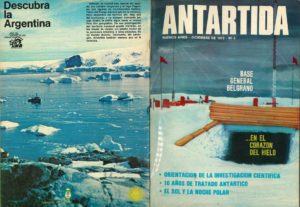 An old collection of Magazines (1971-1992) from Argentina, tells us the history and life of the White Continent. (pics aside show the covers of a couple of magazines)
An old collection of Magazines (1971-1992) from Argentina, tells us the history and life of the White Continent. (pics aside show the covers of a couple of magazines)
A good friend, Ham radio operator: Pedro LU1JHF, wrote:
– Knowing your passion for Antarctica, I’m pleased to share with you this collection of Magazines, which, I am sure will be of your appreciation!- ’73, Pedro LU1JHF
Everyone can download one by one the Magazines; they are available on the website of the Argentine Chancellery.
Just for everyone pleasure, here below are the links:
https://www.cancilleria.gob.ar/userfiles/ut/revantar01_0.pdf December 1971
https://www.cancilleria.gob.ar/userfiles/ut/revantar02_0.pdf December 1972
https://www.cancilleria.gob.ar/userfiles/ut/revantar03_0.pdf May-June 1973
https://www.cancilleria.gob.ar/userfiles/ut/revantar04_0.pdf April-May 1974
https://www.cancilleria.gob.ar/userfiles/ut/revantar05_0.pdf December 1974
https://www.cancilleria.gob.ar/userfiles/ut/revantar06_0.pdf June 1979
https://www.cancilleria.gob.ar/userfiles/ut/revantar07_0.pdf September 1976
https://www.cancilleria.gob.ar/userfiles/ut/revantar08_0.pdf December 1977
https://www.cancilleria.gob.ar/userfiles/ut/revantar09_0.pdf July 1979
https://www.cancilleria.gob.ar/userfiles/ut/revantar10_0.pdf March 1980
https://www.cancilleria.gob.ar/userfiles/ut/revantar11_0.pdf February 1981
https://www.cancilleria.gob.ar/userfiles/ut/revantar12_0.pdf May 1982
https://www.cancilleria.gob.ar/userfiles/ut/revantar13_0.pdf February 1984
https://www.cancilleria.gob.ar/userfiles/ut/revantar14_0.pdf December 1985
https://www.cancilleria.gob.ar/userfiles/ut/revantar15_0.pdf June 1987
https://www.cancilleria.gob.ar/userfiles/ut/revantar16_0.pdf August 1988
https://www.cancilleria.gob.ar/userfiles/ut/revantar17_0.pdf December 1988
https://www.cancilleria.gob.ar/userfiles/ut/revantar18_0.pdf October 1992
TNX Pedro Sarli, LU1JHF
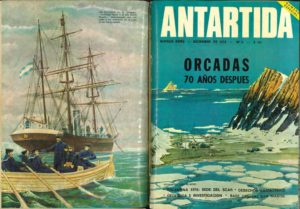 Argentina reaffirms sovereignty over the Argentine Antarctic Sector extending between the 25th and 74th meridians of west longitude, south of the 60th parallel of south latitude.
Argentina reaffirms sovereignty over the Argentine Antarctic Sector extending between the 25th and 74th meridians of west longitude, south of the 60th parallel of south latitude.
Ever since the opening of the first scientific station (Orcadas Base WAP ARG-15) in Laurie Island, South Orkney Archipelago, on 22 February 1904, Argentina has been constantly and uninterruptedly present in Antarctica, which constitutes the longest continuous presence in such continent. Argentina has six Permanent Bases:
(Carlini WAP ARG-2Ø, Orcadas WAP ARG-15, Esperanza WAP ARG-Ø4, Marambio WAP ARG-21, San Martin WAP ARG-Ø8 and Belgrano II WAP ARG-Ø6) and seven Temporary Bases (Brown WAP ARG-Ø2, Primavera WAP ARG-Ø9, Decepción WAP ARG-12, Melchior WAP ARG-13, Matienzo WAP ARG-Ø1, Cámara WAP ARG-16 and Petrel WAP ARG-17).
Argentina is one of the twelve original signatories of the Antarctic Treaty signed in Washington on 1 December 1959. The Treaty sets forth that Antarctica is to be used exclusively for peaceful purposes and forbids any military activity, as well as the testing of any type of weapons. Furthermore, it properly protects the reaffirmation of Argentine sovereignty over Antarctica in the face of claims overlapping Argentina’s own. Hence, the geopolitical significance for Argentina of maintaining a strong and effective Antarctic Treaty System, which also ensures the existence of a large peace zone along our southern border.
Source: https://www.cancilleria.gob.ar/en/foreign-policy/antarctica
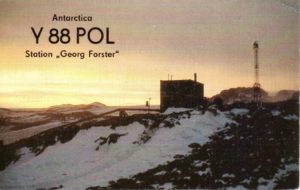 Never too late … Let’s once again join the guys in Antarctica in the celebration of Mid Winter!
Never too late … Let’s once again join the guys in Antarctica in the celebration of Mid Winter!
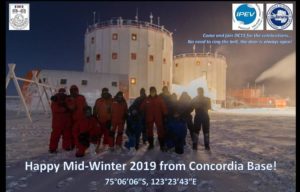 (
(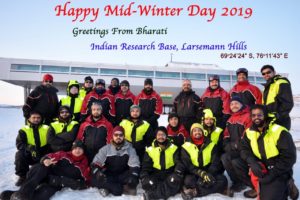
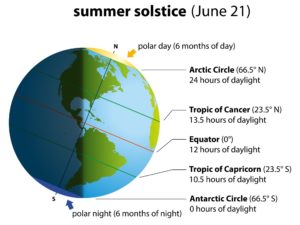 June 21, in the northern hemisphere the sun will rise at 5.36 and set at 8.51, remaining in the sky for 15 hours and 15 minutes, while between the Arctic Circle and the North Pole it will not fade at all. The Northern hemisphere will live the longest day of the year.
June 21, in the northern hemisphere the sun will rise at 5.36 and set at 8.51, remaining in the sky for 15 hours and 15 minutes, while between the Arctic Circle and the North Pole it will not fade at all. The Northern hemisphere will live the longest day of the year. Professional news media invited to apply to visit jointly funded US and UK research on Antarctic Thwaites Glacier.The National Science Foundation (NSF) and the International Thwaites Glacier Collaboration (ITGC) are accepting written proposals from media professionals to visit a “deep-field” camp on the remote Thwaites Glacier in West Antarctica in December.
Professional news media invited to apply to visit jointly funded US and UK research on Antarctic Thwaites Glacier.The National Science Foundation (NSF) and the International Thwaites Glacier Collaboration (ITGC) are accepting written proposals from media professionals to visit a “deep-field” camp on the remote Thwaites Glacier in West Antarctica in December.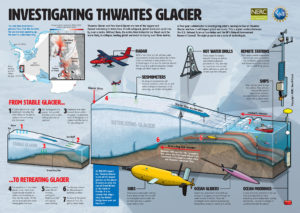 Media will be free to interview Thwaites research teams as they deploy through that camp. A visit to an additional Thwaites Glacier field camp will be highly dependent on weather and logistical variables, and, while possible, cannot be guaranteed.
Media will be free to interview Thwaites research teams as they deploy through that camp. A visit to an additional Thwaites Glacier field camp will be highly dependent on weather and logistical variables, and, while possible, cannot be guaranteed. Located at 74°20’South, 165°08’ East, Edmonson Point is a rounded, largely ice-free point lying below Mount Melbourne along the west side of Wood bay, Victoria land.
Located at 74°20’South, 165°08’ East, Edmonson Point is a rounded, largely ice-free point lying below Mount Melbourne along the west side of Wood bay, Victoria land.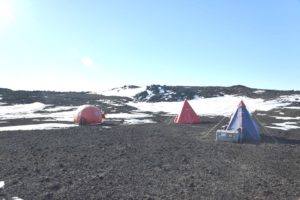 uins and south polar skuas. The site contains a diverse range of freshwater habitats ,terrestrial vegetation and invertebrates are abundant. Weddell seals breed on the adjacent sea ice.
uins and south polar skuas. The site contains a diverse range of freshwater habitats ,terrestrial vegetation and invertebrates are abundant. Weddell seals breed on the adjacent sea ice. An old collection of Magazines (
An old collection of Magazines ( Argentina reaffirms sovereignty over the Argentine Antarctic Sector extending between the 25th and 74th meridians of west longitude, south of the 60th parallel of south latitude.
Argentina reaffirms sovereignty over the Argentine Antarctic Sector extending between the 25th and 74th meridians of west longitude, south of the 60th parallel of south latitude.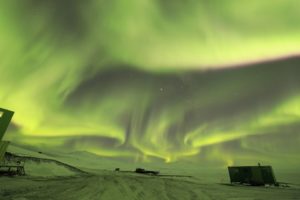 Ross Island turned green in the weekend! This epic shot of an Aurora Australis captured by the winter Leader Jonny Harrison.
Ross Island turned green in the weekend! This epic shot of an Aurora Australis captured by the winter Leader Jonny Harrison.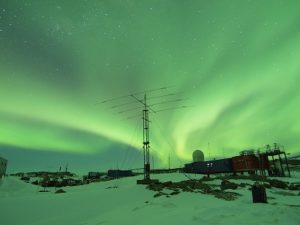 http://www.antarcticanz.govt.nz/scott-base/
http://www.antarcticanz.govt.nz/scott-base/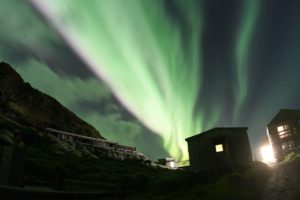
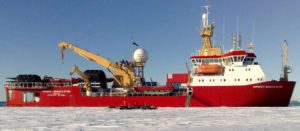 Now the news is official: Icebreaker “Laura Bassi”, former “Ernest Shackleton” of the British Antarctic Survey, is the new OGS ship that will work for PNRA to replace the glorious Italica!
Now the news is official: Icebreaker “Laura Bassi”, former “Ernest Shackleton” of the British Antarctic Survey, is the new OGS ship that will work for PNRA to replace the glorious Italica!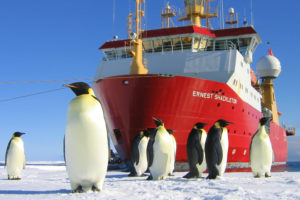
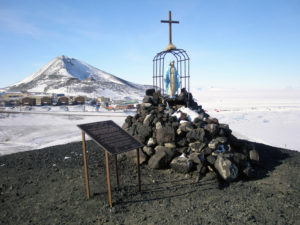 The Our Lady of the Snows shrine is one of the many memorials atop hills along McMurdo Sound to men who lost their lives in Antarctica; this one is farther up the trail from Hut Point. The Shrine is dedicated to Richard T. Williams, US Navy – Seabees, who lost his life at McMurdo Sound on January 6, 1956 during initial construction of McMurdo Station.
The Our Lady of the Snows shrine is one of the many memorials atop hills along McMurdo Sound to men who lost their lives in Antarctica; this one is farther up the trail from Hut Point. The Shrine is dedicated to Richard T. Williams, US Navy – Seabees, who lost his life at McMurdo Sound on January 6, 1956 during initial construction of McMurdo Station.